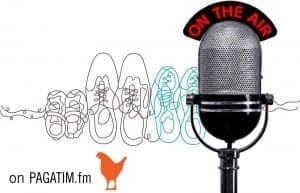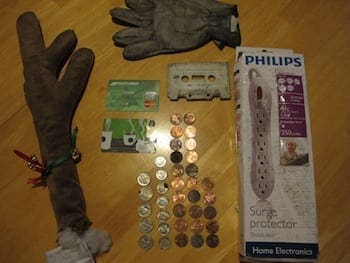7 Ways to Deal With an Unsupportive Spouse (And Keep Running!)
7 Ways to Deal With an Unsupportive Spouse by AMR
When mother runner Celeste posed to the AMR tribe the tough question of how to deal with a less-than-supportive husband, many of you chimed in—with been-there, done-that empathy and encouragement, as well as sound advice.
And clearly it isn’t only Celeste who is experiencing this right now and benefitted from the support. Numerous comments on the AMR Facebook page echoed her sentiments that while her husband says he’s supportive, his actions and attitude tell a different story. As mother runner Wendy says, “I thought I was the only one! Sometimes he’s supportive and sometimes he’s not … my theory is that as long as my running doesn’t inconvenience him, it is OK. My husband is otherwise a pretty good guy, so this just baffles me. And it hurts me big time.”
Thanks to the insight, we’ve come up with a few ways to keep things humming along smoothly at home AND stay strong with your running.
1.) Talk it Through.
Many wondered if there wasn’t an underlying issue—something unrelated from Celeste’s desire to run with friends two times a week in a park about 15 minutes from her home. Mother runner Amy suggested a sit-down discussion with the hubs: “Maybe just a good talk to see why he is really bothered by your running,” she wrote. “Maybe it’s money, maybe it’s jealousy over your newfound confidence, maybe it’s loneliness while you’re running. A good talk may be all that you need.” Adds Heather, “Let him know that some of the reasons you run are to be a better wife and mother. I know that when I run I am better at both because I have taken care of myself as well as my family.”
2.) Run Together.
“Maybe invite your husband to run with you!” suggests mother runner Krista. “Find a fun race to do together, so he can see why you like it so much. Or find a sport you can do together.” Michelle says all it took for her husband’s change of heart was for him to see her cross the finish line of her first half-marathon. “He got a lot more supportive and has started running himself,” she wrote. “And he tells my mommy group friends and people at his work how proud he is.” Several mother runners mentioned that patience in this area can pay off big. Take it from Jennifer: “My husband was the same way—he came to one of my first 5Ks and he was so irritated and not encouraging at all … this went on for a year! Then one day he decided to jump on board and he has since completed an Ironman! We include the whole family now. Our 7-year-old can beat hi mom in a 5K—I love it. Be patient, it will come.” Joane agreed: “Over the years he has come around to the idea and now actually asks me if I am going to go running. I think it just takes time for them to realize this is something that is going to stick around.”
3.) Enlist His Help.
Maybe your partner won’t ever want to run, and that’s OK, say some mother runners. “Me and our five kids run professional races and we call my husband our ‘running manager,’” says Mary. “My guy is not a runner, however he is enjoying the college scholarships our kids are getting from cross-country and loves all the compliments he gets about his athletic-loving family.” Mary says her husband also snaps pics of the family during races—“Especially our ‘kicks’ at the finish lines!”—and he’s also biked alongside her during runs.
4.) Show Your Appreciation.
Mother runner Kris garnered lots of “likes” to her comment, which included understanding that a spouse-of-a-runner could very well have a fear of the unknown and may not feel appreciated. A non-runner “may not understand all the benefits that come from your running,” she wrote. “At the heart of it, husbands and wives (moms and dads) just want to be appreciated for all that they do. The more you can let your husband know how much you appreciate all he DOES do to support your running, the more he will do that.” Teena shared an awesome way of thanking husbands for the support they do show: organizing a “man date” for them to go out together and catch a movie. “They had a great time, so we’re making it a monthly event for them to show them we appreciate the things they do.”
5.) Think “I’ll Scratch Your Back If You Scratch Mine.”
Whether it’s video gaming, TV-watching, golfing, biking or another outdoor pursuit, plenty of AMR spouses have their own recreational outlets—and these mother runners suggested reminding your spouse that you’re just as willing to be supportive of them. “He goes on windsurfing trips with his buddies once a year,” wrote Faryal. “That is what I use as leverage all year long to do long runs on Saturdays.” Laura says she compares her race fees to her husband’s love of playing golf—the cost of playing golf on a special course is pretty comparable. Amy says her hubby bikes “about 3,000 miles during the summer so he’s very supportive of my running.” Still, she says they have to make a schedule in advance “so there are no surprises.”
6.) Compromise, Get Creative.
Some mother runners shared that they run super early in the morning to ensure they’re not taking away from family time. Sticking close to home for runs—asking BRFs to come to your neighborhood on occasion instead of always meeting further away—also seems to help. Dara’s husband likes it when she and their son come to his rugby games (she wishes he’d return the favor and come to her races). She does come to his games, but has taken to “doing long runs near the field after I drop him and my son off for game days and getting back before the game starts.” If the issue is related to money—race entry fees can add up, and some mother runners shared this caused some problems with their spouses—some suggested budgeting with your husband for events you really want to do. Requesting a race entry as a Mother’s Day, birthday or anniversary gift also works for some mother runners.
7.) Accept Reality.
Mother runner Kim, married for 17 years and mom of five, received a ton of nods to her comment, which told the story of also having a husband who doesn’t support her running. Her secret to making it work? Accepting the situation for what it is. “I made the decision a long time ago to not let it get to me. I run for me. Years ago I would have caved in to his indifference and given it up, because it would have been easier. But no way.” Over time, her husband has accepted her passion for running. “If there are obstacles in your way, even if it is your husband, get around it, over it, or through it any way you can and keep your feet on the pavement. One foot in front of the other. We’ve got this thing!”
On 6 Easy Miles, Almost Broken Toes, and Running Journeys
So as you may know, Sarah and I were in Salt Lake City midweek last week for the Outdoor Retailer show. Long story short: epic ice storm on Thursday; I (mistakenly) thought we were late for my (turned out to be very delayed) flight; the parking lot was an ice rink. Skating over to the rental car, I wiped out hard, turned around and saw Sarah fall down right after me.
We laughed at our simultaneous spills, but my left foot was crying. (Odd, because I’m pretty sure I fell on my bum.) Specifically, my left big toe, where it connects to my foot, was screaming. It was so swollen and achy when I landed in Denver, 7 hours after we hurried to arrive at the SLC airport, I’ve never been so thankful for the people movers so I could just stand still. I was pretty sure I hadn’t broken the digit, but I was worried that I’d really done some serious damage.
That got me thinking about all the injuries and issues I’ve had in the past 10 years—coincidentally, about the same age as my oldest kid—that have knocked me out for months:
- Bunionectomy in 2004 (most painful thing I’ve ever done, and the worst part was it didn’t even freakin’ work)
- That whole pregnancy/birth thing: 2005-2006
- Stress fracture in heel in 2007
- General hip and glute problems resulting from carrying large children + stress fracture in 2008
- Broken wrist in 2009 from fall during trail run
- Two bulging discs in 2010, which have been helped significantly by Pilates
- Stress fracture in metatarsal in 2010 where I wavered on wearing the clompy black boot
- Fibroid craziness in 2012
I ran in Salt Lake on Thursday before the iciness rained down. It was an easy 6 miles. Not one to use adjectives casually, I can slap easy in front of run because this is what I said to Sarah when I got back to our hotel room: “I’m so glad my fitness is back to the point where I can run six miles and not have it be a total slog.” I think she was surprised by that statement—I am, after all, supposed to be an Ironman in training—but it’s the truth. Last year at this point, I was severely anemic and unable to do much of anything. So getting to six easy miles, a step I’ve climbed to again and again over the past decade, always feels like an achievement.
I don’t deny a broken toe would’ve really sucked. I would’ve probably had to be back in the clomper, and all of my Ironman ambitions would’ve likely had to be abandoned. (They still may be, but that’s another story, about another joint–my shoulder–for another time.)
But I also don’t deny that a broken toe would’ve been just that: a broken toe, another chapter in my life as an athlete. Another few months off, multiple layers of fitness lost, then the opportunity to dust myself off and continue with my story.
Instead of thinking of it as setbacks and comebacks, or having to stop totally and then start again, I have come to think of it like this: Sometimes I get to have my foot on the gas, and sometimes I just have to be content to coast. Along the way, I’ve built resilience, some semblance of patience, and a binder full of good stories. (Here’s the public service announcement if you’re about to put your foot back on the gas: lots of great ideas here.)
I can waste my time drooling that the SBS’ of the world never seem to get hurt badly enough to have to coast, or I can recognize that we all have our different running journeys. And since I don’t have one extra ounce of energy to waste on being envious, I have to embrace the fact that my running map’s topography is much more rutted out than most. Breaks and strains and blood and bones means that my valleys go lower than average, and my peaks soar up to the bluebirds when my body allows me to do exactly what I want to do.
Which is why those six easy miles on a dark, rainy Thursday morning meant so much to me; I had climbed to a summit yet again, and the view from there was endless and full of possibility.
And those six miles are also why, if I had broken my toe, I knew I’d find the strength and will to hike out of a valley once again. I simply can’t get enough of that view.
Wheezes and Sneezes: Our Talk with an Allergy Doctor
Dimity and Sarah talk to David Fitzhugh, a doctor specializing in allergy and immunology in Chapel Hill, N.C., because it sometimes seems they’re the only mother runners not suffering from allergies or asthma. (Knock on wood.) Dr. Fitzhugh assures the gals that “everything that wheezes isn’t asthma,” and he shares numerous suggestions to managing symptoms if it is. He also gives the 101 on gluten-intolerance, which he believes is more common than some folks think. Not to be outdone by Lance and Oprah, we talk steroids.
Looking to cook the slowcooker recipes Sarah and Dimity talked about? Here are the links to the Pulled-Pork Tacos and Chicken Tikka Masala recipes. Dimity follows this recipe for Red Lentil Stew.
If you’re digging our podcasts, we’d be super-grateful if you’d take a minute (because we *know* you have so many to spare!) to write a review on iTunes.
[audio:http://www.podtrac.com/pts/redirect.mp3/podcasts.pagatim.fm/shows/amr_012413.mp3]**Also, the quickest way to get our podcasts is to subscribe to the show via iTunes. Clicking this link will automatically download the shows to your iTunes account. It doesn’t get any simpler than that!
Why Is Road Running Such a White Sport in the U.S.?

We love this photo of gals we met at an Atlanta race expo, but as you can see, we’re all as white as the tees Dimity (far right) and I (2nd from left) are sporting.
On this, the holiday celebrating the birth of Martin Luther King, Jr., I have a dream: that one day, running will be a more multi-racial sport. The starting corrals at most road and trail races are as white a snow-covered ski hill: a few pops of color, but the overwhelming hue is white. Dimity and I are struck by it at race expos we attend across the country: We meet mother runners in all ages, shapes, sizes, and speeds, but the overwhelming majority of them are caucasian. Reflecting back on the events we’ve attended in the past three years, in cities like Seattle, Las Vegas, Minneapolis, Denver, Kansas City, Portland, Anaheim, and Nashville, a flurry of white faces fill our minds. It’s only been in cities in Texas, such as Austin and San Antonio, where we’ve met a good number of Latina runners; only in Annapolis and Atlanta were a relatively decent percentage of the racers African American. There are some Asians at most of the expos, but not many.

Rosa Gaby (2nd from left) and her friends added welcome color to Rock ‘n’ Roll San Antonio in several ways.
Specific racers come to mind: Bridget, a lithe African-American mother, who was the 2nd-place finisher at 2010 ZOOMA 10K in Annapolis. Irma, an effervescent Latina we first connected with at the 2010 ZOOMA expo in Austin; she ran the race with a group of other Hispanic mothers. There’s Lavon, an Indian mother of two who grew up in Dubai; she and I first met at the Happy Girls Run in Bend, Oregon. (She’s also the mother runner modeling two of our latest tees: I freely admit I asked her to model for us because she’s a mother of color. The fact that she’s beautiful was a bonus.) But for every one of these women of color, I could paint portraits of hundreds of white mother runners we’ve engaged with at races.
I’m puzzled about why running is overwhelming white. Is the barrier cost? Available time? Childcare options? Resources? Access to safe running routes? Cultural influences? Role models? I’m at a loss to find an explanation; I just know it saddens me.
I’d love to hear from runners of color who can enlighten us. Is there something we all could be doing to make all runners feel more welcome? Is there a way we can make the running community more like a rainbow and less like a ski slope? Please click on the orange Comments ribbon to say what’s on your mind about this topic.
Baby, It’s Cold (and Snowy and Icy) Outside!
Given the Arctic temps that have gripped Denver, it was only natural that Sarah and Dimity talk winter weather—and how to dress for exercising in it. Along the way the gals laugh over their experiences running in cold and slippery conditions; Sarah goes way back into her personal archives to talk about when she discovered her inner badass runner (when she was a long way from being a mother ). Dimity shares a painful story that’ll make you wince—and think twice about venturing out onto icy conditions. And, finally, the ladies will tell you the connection between winter weather and waxing facial hair.
If you’re digging our podcasts, we’d be super-grateful if you’d take a minute (because we *know* you have so many to spare!) to write a review on iTunes.
[audio:http://www.podtrac.com/pts/redirect.mp3/podcasts.pagatim.fm/shows/amr_011713.mp3]**Also, the quickest way to get our podcasts is to subscribe to the show via iTunes. Clicking this link will automatically download the shows to your iTunes account. It doesn’t get any simpler than that!
Running for Change (and Dollar Bills!)
I keep my eyes peeled here in Portland, yet rarely find more than 56-cents on a run. Do you think it’s a Texas phenomenon that folks drop so much money?
I honestly don’t know, as I also found coins while running in Wisconsin this fall. However, I didn’t find anything while vacationing all along the West Coast this summer. Maybe it just isn’t a Pacific thing to throw money out of your car window at stop lights? My husband and I have actually witnessed this happen on more than one occasion, and it makes me wish I was running each time! I shake my head at the amount of coins I find; I just can’t think of any excuse for dropping coins into the street. It’s money–it all can get spent the same!
Then do you think you have a special gift for spotting money while running?
I don’t necessarily think I have a gift for spotting money on runs, though my husband begs to differ. He finds about a tenth of what I find on a run. Just talking bills, he has found $3, while I’ve found the rest; so I suppose I must have some talent…. Generally I run solo, and looking for coins entertains me as much as my music does. Most moola you’ve ever found on a run?
$56 and change, all found on an early Sunday morning run alongside a major road. The bills were in the drainage washout from a parking lot, scattered about 10 feet apart from one another. To this day, I can’t believe my good fortune on that run.
What gave you the idea to collect it for a year, then donate to charity?
I found a $20 bill in a puddle one morning in December 2011, followed by a credit card about a mile later; I rang doorbells and found the card’s owner. When sharing this story with a fellow mother runner, we both decided to collect any cash we found over the course of 2012. She hoped to find enough to buy a bag of Sport Beans, and I hoped to find enough for a GU. Never in my wildest dreams did I think my pickle jar would fill up by September, necessitating another jar.
You don’t just add cash to your stash. Tell us what you do with jewelry and such.
I have found some odd items on the road – everything from Ninja Lego Men to bungee cords, pliers, and work gloves. I donate items that don’t look like roadkill to Goodwill, so others can benefit. Plus I like to think I’m doing a little part to clean up Texas roads. I did find a 14K gold “pimp ring” in the corner of a parking lot, which we sold for scrap gold to the tune of $240 (!!), and I sold a sterling silver men’s bracelet, too. I have come across three driver’s licenses, which we turned in to the police; two college IDs that we mailed back to the campuses; and countless credit and debit cards. (We just cut those up.) I also found a dog tag that I sent back to the Army, and a season pass to a Six Flags Fiesta Texas. Too bad I’m not a guy named Juan with a goatee….. Three tips you’d give to gals wanting an, ahem, enriching run?
Typically I find the most money at intersections near commercial areas along a major highway near my house. [Note: She told us in person the highways have super-wide shoulders.] Rarely do I find more than a penny when running in actual neighborhoods, so I run there for my shorter distances or when my time and pace matter. I actually love getting stopped by red lights on my long runs, giving me a few extra seconds to look for coins around the center islands.
My best advice for anyone hoping to find a little moola is to run through bar parking lots early on Sunday mornings, before any cleaning crew arrives. I have had the best luck at finding actual bills running past bars! For example, recently, George Washington [$1] joined me at Mile 2 outside a sports bar; Andrew Jackson [$20!!] joined me at Mile 6 on the same run outside a country and Western dance bar; then only two pennies over the rest of the 11-mile run.
I do attribute my ability to find money to a higher power: Early one Sunday morning, I found a $10 bill while doing hill repeats on the steep driveway of a local church. I truly believe the reason I keep finding more cash is because I’m donating it all to charity.
Now you tell us: Do you find money while running, or no? If you do, care to share any tips?










